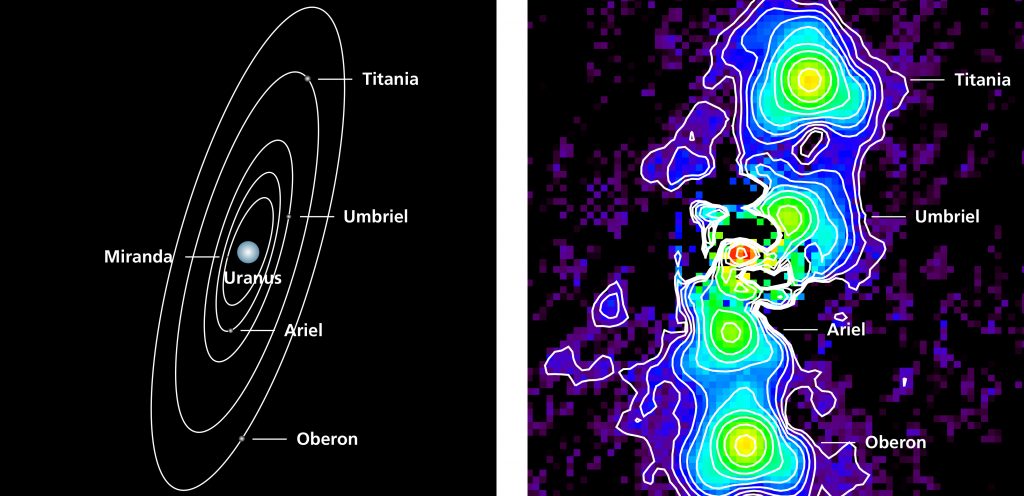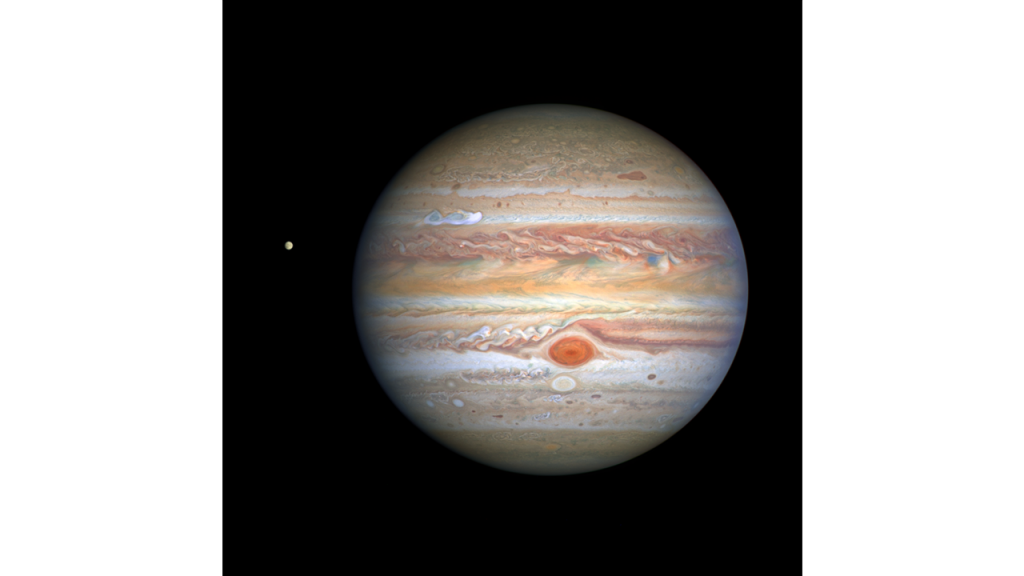Media
Transcript
We have spent a lot of time talking about Venus this week. It’s been like that meme where the guy is looking over his shoulder at a woman who is not the one next to him. So I will give my one thought on the Venus news: I think it’s very interesting, and I look forward to further research as it happens. I’m not ready to say there’s life on Venus, but I’m no longer thinking it’s incredibly unlikely.
And with that, let’s look at the rest of the planetary news from this week.
Planetary science, in my opinion, includes exoplanets. After all, we’ve gone from “look there’s an exoplanet!” to “the exoplanet has an atmosphere with water vapor” in less than thirty years. Exoplanets are no longer theoretical. We have discovered thousands of them, and their systems are incredibly diverse, leading us to change our theories about planetary system formation.
So it’s newsworthy when something out of the ordinary is found. In the case of our first story, a team led by Caleb Cañas of Penn State has announced in The Astronomical Journal the discovery of the fifth Jupiter-sized planet orbiting a low-mass star. As Dr. Pamela says, you find something once, that’s interesting. You find something twice, you have a group. Now we’ve found this type of system five times.

However, there is still a first here. The planet, TOI-1899 b, has the longest orbital period of the warm Jupiters found – about 29 days. The other four examples all orbit their host stars in less than four days. The new planet was found using data from NASA’s Transiting Exoplanet Survey Satellite (TESS) spacecraft. The planet’s mass, radius, and orbital period were determined using the Habitable-zone Planet Finder (HPF) at McDonald Observatory, and its existence may answer some questions about planetary formation.
As co-author Rebecca Dawson states, “Warm Jupiters like TOI-1899 b orbit surprisingly close to their star. Even though the planet’s orbital period is long compared to many other giant planets detected and characterized through the transit method, it still places the giant planet much closer to its star than we’d expect from classical formation theories. Detailed characterization of their physical and orbital properties, system architecture, and host stars—as the HPF team has done for TOI-1899 b—allow us test theories for how giant planets can form or be displaced so close to their star.”
Personally, I think that there are so many different examples of planets and host stars and systems that I’m not certain we will ever find one unifying set of rules. As it is, we continue to learn new things about our own solar system that change our ideas of how it evolved over time.
Observations taken using the Herschel Space Observatory have given us the answer to the question of “what are Uranus’s moons made of?” A question, it should be noted, the research team wasn’t even trying to answer. As co-author Ulrich Klaas explains: “Actually, we carried out the observations to measure the influence of very bright infrared sources such as Uranus on the camera detector. We discovered the moons only by chance as additional nodes in the planet’s extremely bright signal.”

Cold objects, such as Uranus and the fives moons included in this study, radiate very brightly in the infrared spectrum between 70 and 120 micrometers. They can reach blazingly hot… I mean bitterly cold temperatures around –213 to –193 °C. Add in the weirdness that is Uranus’s extremely tilted orbit, and researchers had perfect positions to see how the surfaces of the moons retained heat as they rotated. The team found that the moons stored heat well and cooled down slowly.
The conclusion was that the moons are similar in composition to the dwarf planets at the edge of our solar system, like Pluto or Haumea. They show characteristics like that of Transneptunian Objects, which are located in a zone beyond the planet Neptune. Scientist Thomas Müller noted, “This would also fit with the speculations about the origin of the irregular moons. Because of their chaotic orbits, it is assumed that they were captured by the Uranian system only at a later date.”
I’m not going to say the result is a surprise. We’ve suspected that the outer planets have a lot of captured moons. But suspicion isn’t the same as confirmation, and it’s nice to see science telling us we were right.
I’m still in favor of a Cassini-like mission to Uranus. There is more to learn there.
Of course, missions these days have been heavily focused on sticking closer to home. I mean, Mars. We’re all about Mars. Mars is the girlfriend in that meme I spoke of earlier.
Now, a study from researchers at Cornell University and Spain’s Centro de Astrobiología using simulations involving clays and amino acids has given us pessimistic results. The study found that acidic fluids, like those that once flowed on Mars’ surface, may have destroyed evidence for life hidden within the iron-rich clays of the red planet.

Here’s what we are hoping: the clays on Mars, like on Earth, are organized into layers. Within those layers, again like on Earth, is where the evidence of biological life can become trapped and well preserved. These markers can include lipids and proteins and such. I’m not a biologist or a paleontologist, so I won’t mess up the details.
The issue is that acidic fluids can destroy this biological evidence. The researchers tried to preserve an amino acid called glycine within a clay. The clay had already been exposed to those acidic fluids. They then exposed the clay, with its preserved glycine, to ultraviolet radiation similar to that of Mars, and found gel-like silica afterward. Co-author Alberto G. Fairén summarized, “When clays are exposed to acidic fluids, the layers collapse and the organic matter can’t be preserved. They are destroyed. Our results in this paper explain why searching for organic compounds on Mars is so sorely difficult.”
Not the greatest news story to end the day with, I know. So here’s a final image to cheer you all up.

We all know the Hubble Space Telescope takes amazing pictures of objects outside our solar system and even the Milky Way. Today, we present one taken of objects within the solar system – Jupiter and its moon, Europa.
In this image, we can see a storm stretched out across the mid-northern latitudes. The dark clumps trailing that storm could become another Great Red Spot, but for the upper hemisphere. Speaking of the Great Red Spot, underneath it is a storm we call Red Spot, Jr. Junior had appeared to be fading in previous photos, but now it has darkened again and could be strengthening.
And there, off to the side, is the wonderful Europa, one of my personal favorite targets for life. We’ll visit you soon, pretty one. Soon.
Learn More
A Warm Jupiter Orbiting a Cool Star
- Penn State University press release
- “A Warm Jupiter Transiting an M Dwarf: A TESS Single-Transit Event Confirmed with the Habitable-zone Planet Finder,” Caleb I. Cañas et al., 2020 Sep. 2, Astronomical Journal (preprint on arxiv.org)
Herschel Observations Reveal Composition of Uranian Moons
- Max Planck Institute for Astronomy press release
- “Herschel-PACS Photometry of the Five Major Moons of Uranus,” Ö. H. Detre, T. G. Müller, U. Klaas, et al., 2020 Sep. 14, Astronomy & Astrophysics (preprint on arxiv.org)
Study Shows Difficulty in Finding Evidence of Life on Mars
- Cornell University press release
- “Constraining the Preservation of Organic Compounds in Mars Analog Nontronites After Exposure to Acid and Alkaline Fluids,” Carolina Gil-Lozano (Centro de Astrobiología, Madrid, and Universidad de Vigo, Spain) et al., 2020 Sep. 15, Scientific Reports
Hubble Captures Crisp New Image of Jupiter & Europa
- Hubble Europeans Space Agency Information Centre press release
- Space Telescope Science Institute press release
Credits
Written by Beth Johnson
Hosted by Beth Johnson
Audio and Video Editing by Ally Pelphrey
Content Editing by Beth Johnson
Executive Producer Pamela Gay
Intro and Outro music by Kevin MacLeod, https://incompetech.com/music/


 We record most shows live, on Twitch. Follow us today to get alerts when we go live.
We record most shows live, on Twitch. Follow us today to get alerts when we go live.